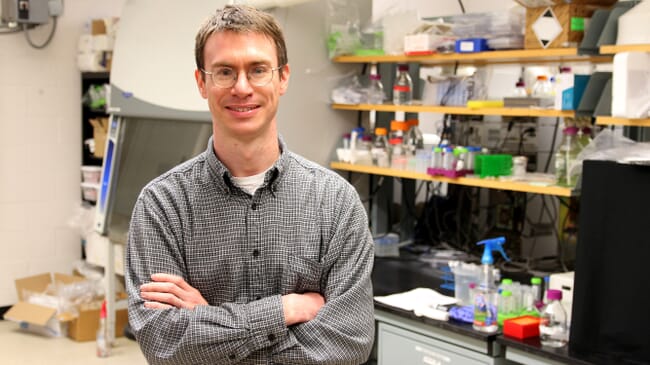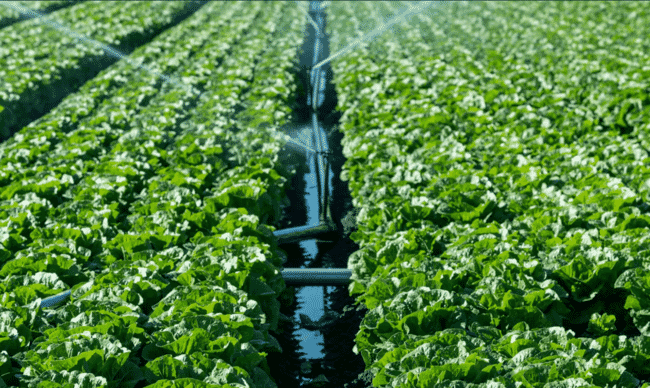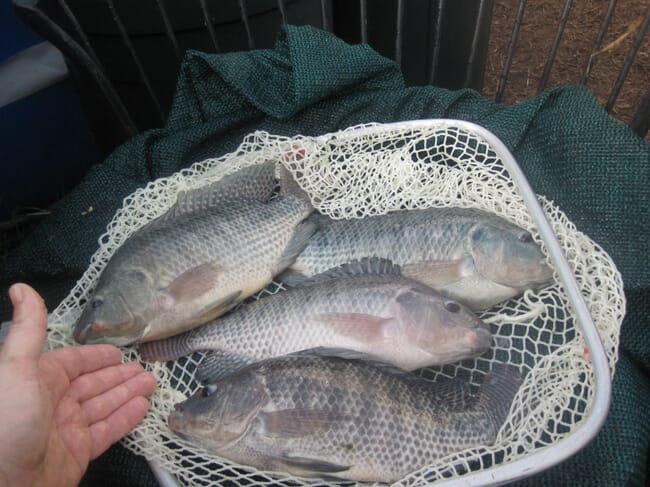
Higgins is leading a research project that seeks to improve understanding of how aquaponics design decisions affect microbial stability, pathogen dynamics and product quality
It looks like a natural fit: a sustainable system that produces fresh vegetables and fish located in food deserts with marginalised populations.
And, while there has been an explosion in the interest surrounding such an arrangement, there are significant technological and social barriers hindering its adoption.
Overcoming these barriers is the goal of a research project being conducted at Auburn University and led by Brendan Higgins, assistant professor in the College of Agriculture Department of Biosystems Engineering.
“At its best, aquaponics allows local people to produce their own fresh fish and produce in a sustainable manner: The wastewater from the fish is used to provide water and fertiliser to the plants,” Higgins said. “However, the development of this fusion of aquaculture with hydroponic vegetable production in food deserts doesn’t come without barriers.”

Though aquaponics allows users to sustainably produce their own food, there are barriers to designing and adopting the systems © Jim Rakocy Aquaponics
These barriers include:
1) systems that are prone to instability without advanced technical knowledge; 2) fish and produce quality that do not meet consumer quality demands (eg, muddy fish flavour); and 3) food safety issues, given that pathogens in the fish wastewater can contaminate the vegetables.
“A failure to address these three issues will continue to place aquaponics systems—and the corresponding nutritional and environmental benefits—out of reach for marginalised populations,” Higgins said.
The objective of the research project—which is working with a $575,730 grant from the National Science Foundation—is to improve understanding of how aquaponics design decisions (eg, integrating algae into biofloc, coupled vs decoupled systems) impact microbial stability, pathogen dynamics and product quality.
“Our central hypothesis is that algal biofloc and decoupled systems will exceed the performance metrics of bacteria-centric biofloc and coupled systems (85 percent of current systems) in terms of system stability and ease of operation, nutritional and flavour profiles, and pathogen management when placed in the hands of novice users,” Higgins said.
The project will allow researchers to rigorously test integrating algal-biofloc and decoupled plant production into small-scale aquaponics systems, both independently and in combination.
Algal biofloc, Higgins explained, is a mixture of algae and bacteria that transform nutrients into less toxic forms for both fish and plants. Bacteria biofloc does the same thing but researchers have found that the mixture of algae and bacteria is even more effective, at least in a lab setting.
“We want to know if this holds true in actual aquaponics systems,” he said.

Algal biofloc is a mixture of algae and bacteria that transform nutrients into less toxic forms for both fish and plants © Bill McGraw
Coupled aquaponics means there is recirculation of water between the fish tank and the plant bed (and back again). Decoupled means water flows in one direction: from fish to plants but not back again.
“Our project looks at both of these design choices, both independently and in combination,” Higgins said.
The test systems will be operated by high school students in east Alabama after hands-on training in a synergistic school-university partnership.
“Our team has extensive experience conducting research on aquaponics systems and algal-bacterial treatment of waste, and it engages frequently in educational and outreach programmes with novice users,” he said.

The three specific aims of the research project are to:
- Test the integration of algae and decoupling into biofloc aquaponics to improve stability and ease of operation for novice users (high school students). Researchers hypothesise that the integration of green algae into the biofloc and deployment into a decoupled aquaponics system will improve system stability (nitrification capacity) and reliability (plant and fish survival).
- Determine the contribution of algal biofloc to improved nutritional quality and the flavour profile of aquaponics products. Integrating Chlorella algae into the biofloc will hypothetically increase the Omega-3 fatty acid profile of fish, antioxidant content of vegetables, and improve the fish flavour profile by displacing opportunistic bacteria and cyanobacteria species that generate muddy flavours.
- Quantify the impacts of algal biofloc and decoupling on indicator pathogens in aquaponics. The presence of algal taxa like Chlorella in the biofloc and use of decoupled systems hypothetically will reduce the presence of indicator pathogens. While students and teachers will run the different aquaponics systems, Auburn University and the Bashan Institute of Science will conduct advanced chemical, microbiological and genomic analyses of the systems. Students will evaluate system ease-of-use and flavour of products through surveys.

Higgins believes that integrating algae into the decoupled biofloc system will help maintain the system's microbial stability © Bill McGraw
The research project is expected to resolve persistent challenges that have hindered aquaponics adoption to date, Higgins said.
“For example, the integration of algae into decoupled biofloc production has great promise to resolve microbial stability and pathogen concerns,” he said. “Moreover, our improved understanding of these microbial dynamics in aquaponics can translate broadly to other areas of aquaculture, nutrient recovery and waste management. An improved understanding of how design choices impact user experience can translate to research on other scalable food production technologies.”
The project will lead to measurable benefits by enhancing the education of high school student participants who live in low-income communities with limited food access.
“Approximately 225 students will engage in hands-on learning by operating the aquaponics systems, allowing them to learn and apply knowledge of agriculture, biology, chemistry, nutrition and engineering,” Higgins said.
“This is important because these students are the future of sustainable food production: The skills they learn extend to a wide range of career and education pathways. We expect that reaching them in their formative years will result in measurable changes in self-perceptions regarding STEM topics, which will be assessed through survey instruments.”




